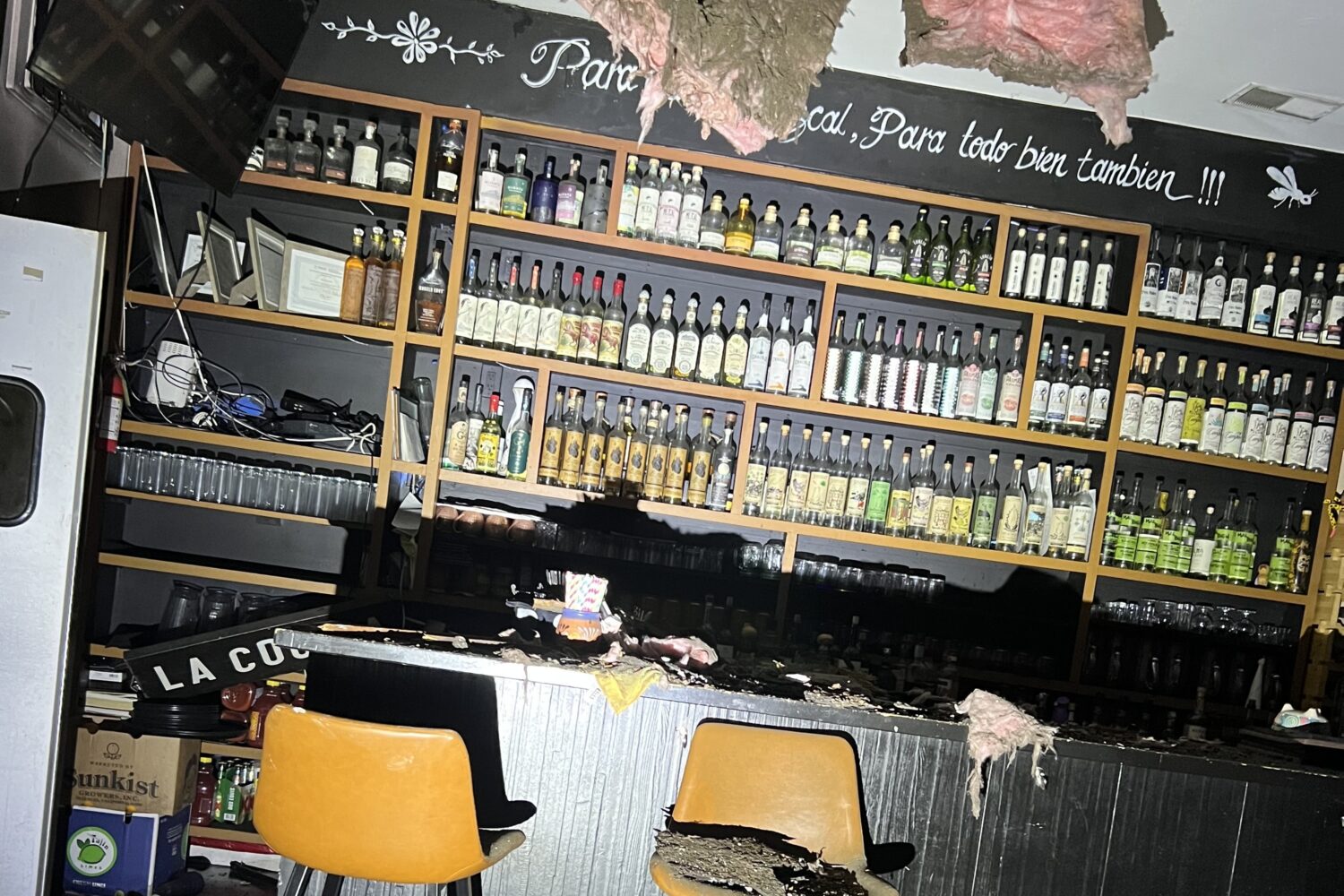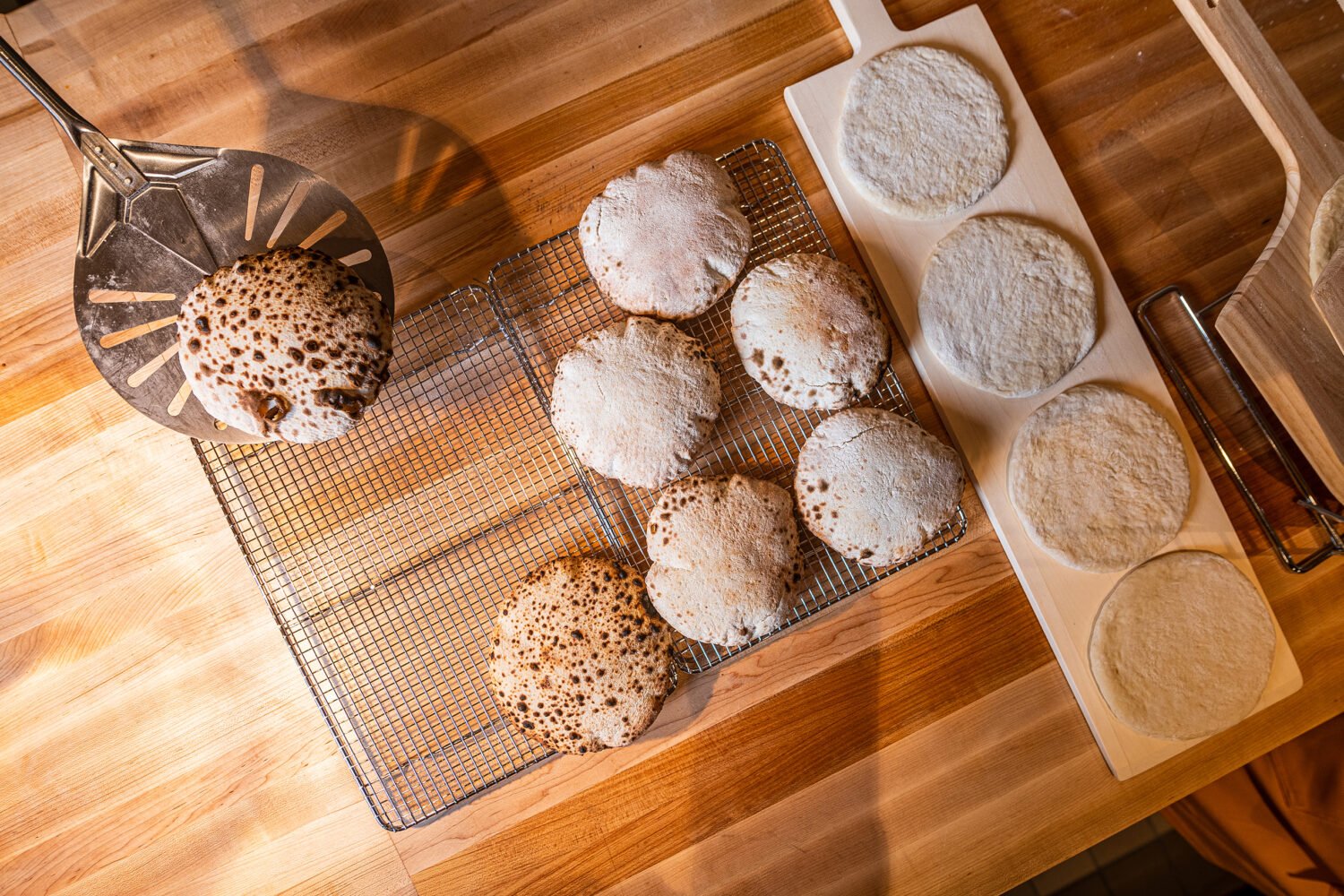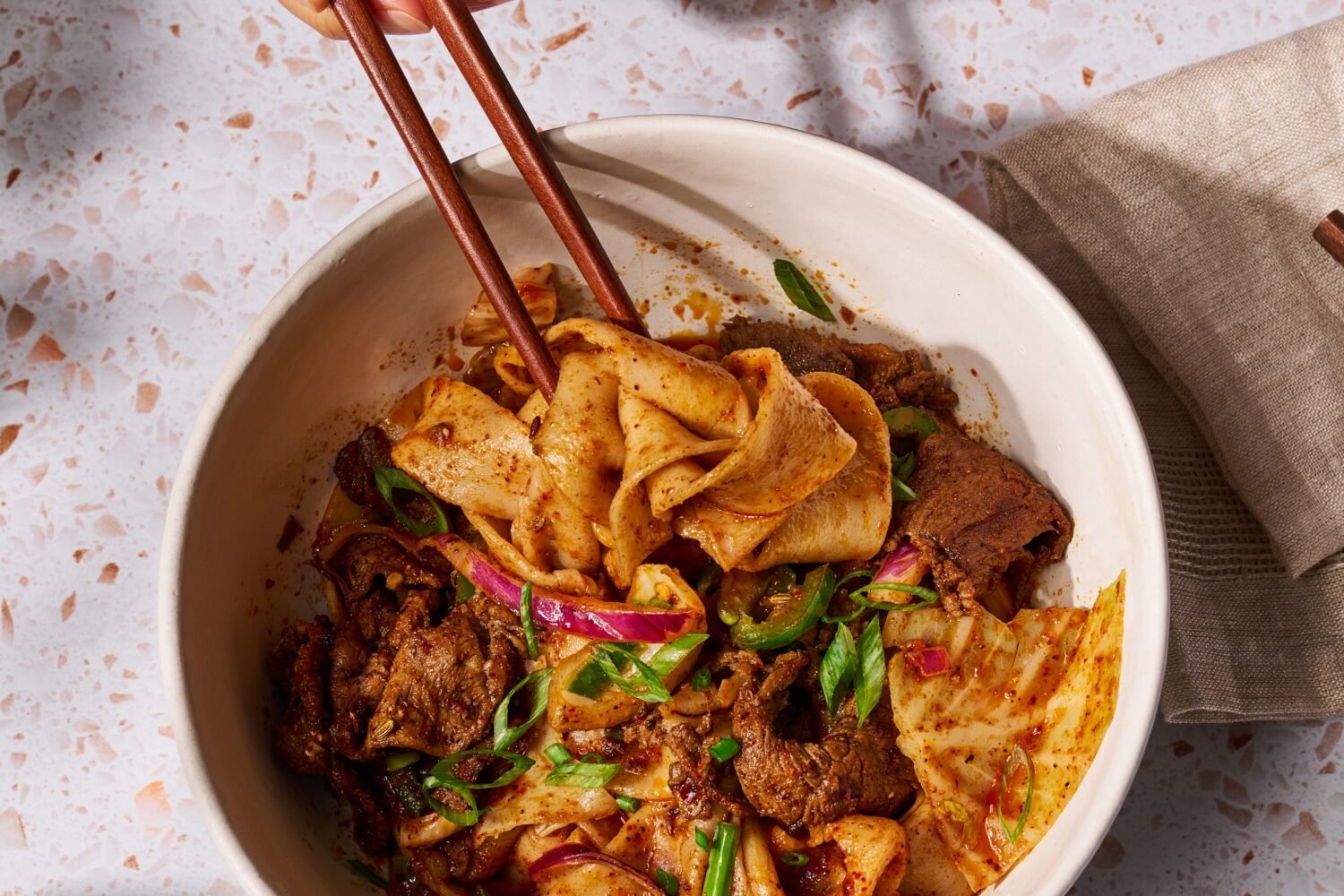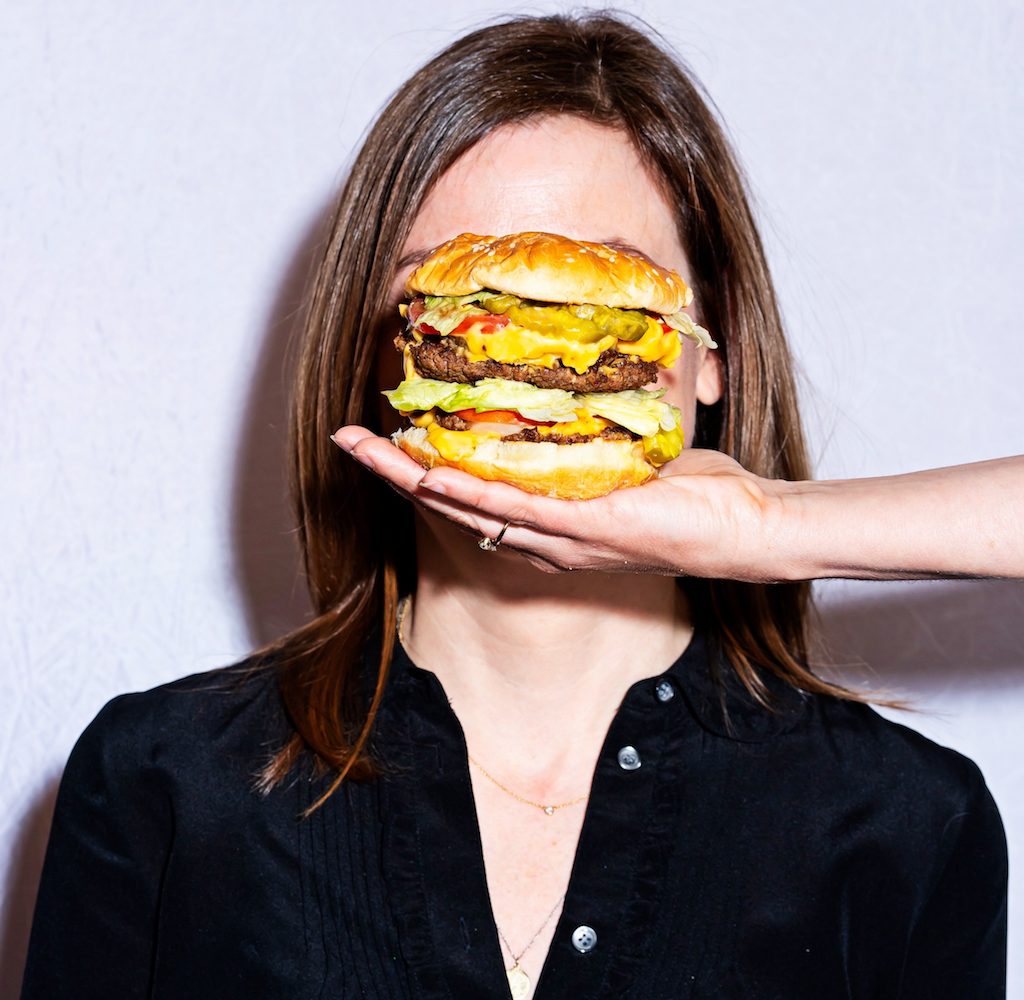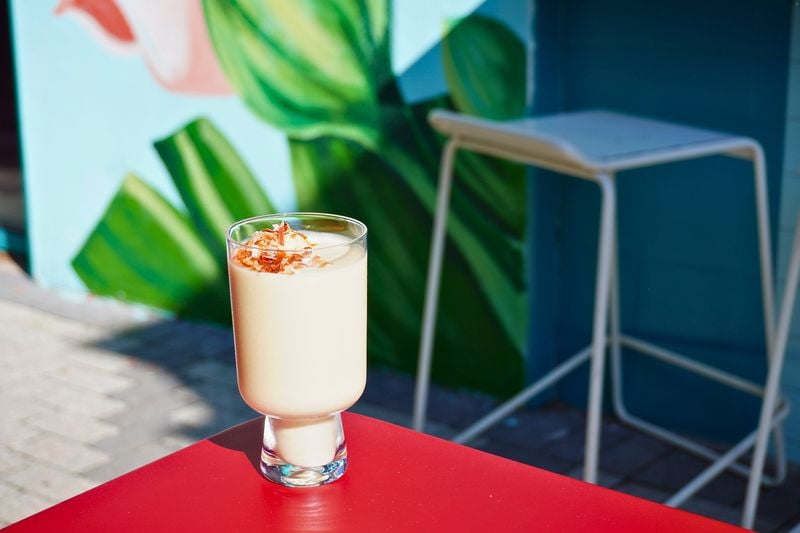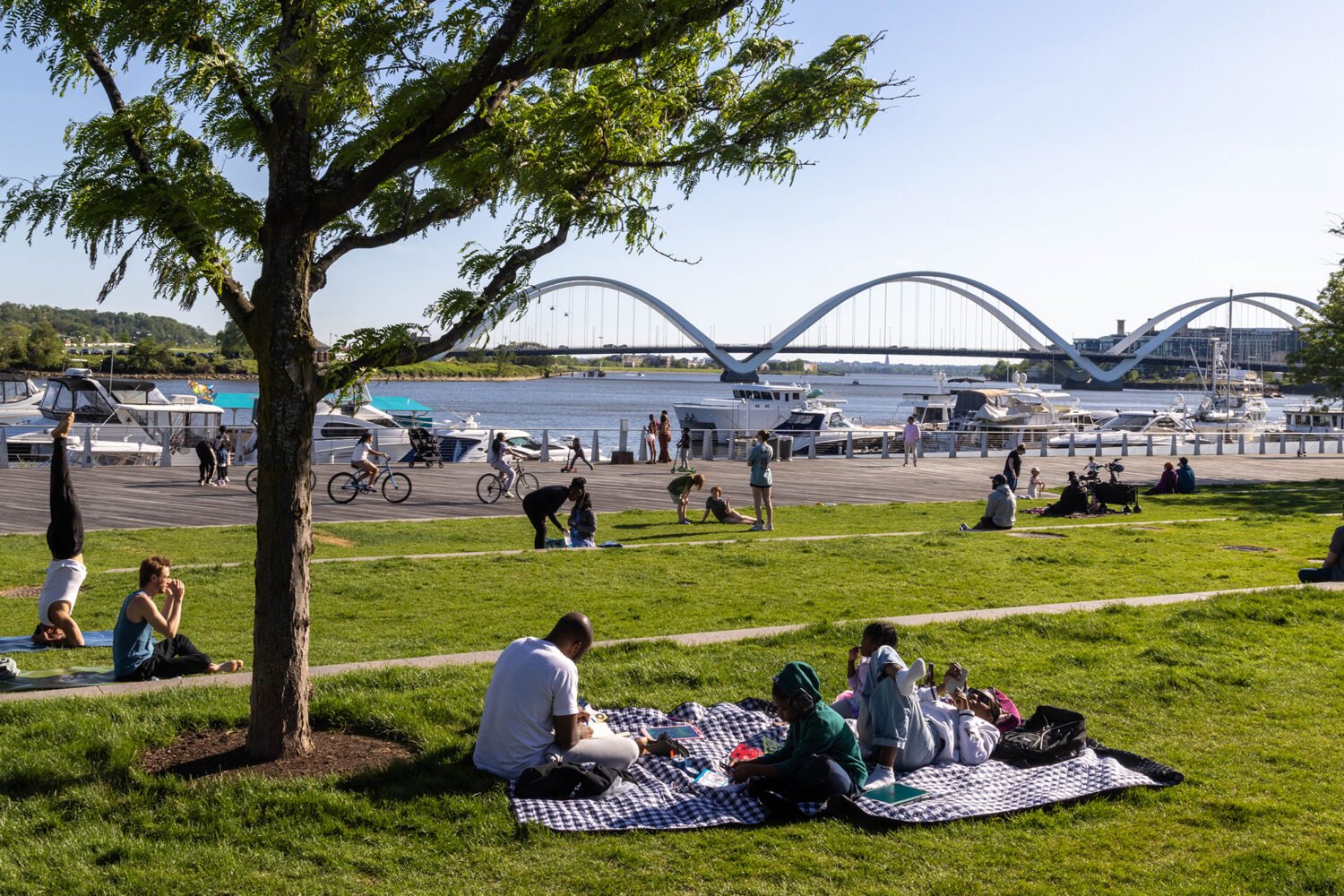Join us today, Friday, March 9, at 11 AM, to chat with Washingtonian‘s executive food editor and critic, Ann Limpert. You can leave your questions in the form below. Be sure to refresh this page often to see her answers!
Ann: Happy Friday! Excited to chat with you folks for the next hour or so on this beautiful but blustery day. Where are you folks dining this weekend? I’m heading to Palm Springs tomorrow—with a 16 month old—so if anyone has ideas for lunch places out there, I’d love to hear them. Anyway, onto your questions!
Donald: What is one thing you are tired of seeing in restaurants? Food trends, poor design, specific types of wine, etc.
Ann: In no particular order: Wincingly loud dining rooms; over-the-top desserts created solely for Instagramming; crispy Brussels sprouts (tasty enough but WHY ARE THEY EVERYWHERE); indifferent, blasé hosts; and simple-syrup-heavy cocktails.
Was Blue Duck Tavern intentionally left off of the top 100 list? I have never been, but I have been told very good things about it. Although many might not agree with Michelin’s ratings, I find it hard that 100 restaurants are “better” than Blue Duck. Did they drop over 72 spots from last year?
Ann: This is the basic question I ask myself when visiting the many, many restaurants we check in on for our 100 Best issue: Would I send a friend there? Go back on my own dime? I came away from a merely decent $300+ dinner for two at Blue Duck thinking no, I wouldn’t. My meal consisted of overly rich, expensive, unmemorable hotel food. There are—yes—100 other places I’d tell you to go spend that kind of money on right now. Still, unlike the red book (at least it seems), we go back every year to make sure.
Why do you think our chefs and restaurateurs are OBSESSED with the “small plate” phenomenon. If such a large part of the experience is sharing and bringing people together why can’t we move away from that and back to sharing portions that a larger group can enjoy?
Ann: Chefs do love small plates, yes, but not as much as they love the slightly-bigger-than-an-app share plates these days. In theory both small and share plates a great way to eat—you get to taste lots of different things, and if a dish sucks there’s plenty else on the table to distract you from it. In practice it can be annoying (think of all the times you’ve gotten a plate of three fritters for a party of four, or gotten a single messy bite of the one dish you were truly excited for). At least nowadays most kitchens have become more adept at handling small plates and coursing them out, as opposed to sending them in a random order (short ribs in the beginning, dainty crudo at the end) or turning your table into a jigsaw puzzle of plates. Still, I think the ideal number of folks sharing a small plates dinner is two, not four or six.
But anyway, why do chefs love them? I think that appetizers and small plates are generally a more exciting canvas to work on. There’s not the pressure to fill a protein/starch/veg template, and chefs can get away with bolder, brighter, richer, or more concentrated flavors that wouldn’t work in bigger quantities.
Still, I’m with you—I love a good large format, family-style plate that the whole table can tear into, something more and more places are offering. It’s a much more pleasant way to eat with a big group. My faves of late: The slow-roasted pork shoulder with parker house rolls and ranch at Bar Pilar; the extravagant (and extravagantly expensive) seafood paella at Del Mar; and the whole chicken with garlicky toum at Maydan.
This is my question????? Where would you like someone to take you to dinner for a special birthday? Price not being a problem….
Ann: Funny you should ask—I celebrated my birthday earlier this week. Went to Le Diplomate, which I always love. The biggest hits: the grand aioli (OMG that saffron dip), the onion soup (always and forever), and the buttery, buttery steak au poivre.
But if some fairy godmother is paying? This morning I’d like to be teleported to Barcelona for a plate of razor clams.
I love pasta and I’ve been looking to take a class on how to make pasta from scratch. I’d love to take a class where I can learn proper technique and different shapes. Do you have any suggestions for any restaurants offering classes?
Ann: It’s been a long time since I’ve taken a cooking class (RIP L’academie de Cuisine) but I’d check out the offerings at Via Umbria in Georgetown. Also keep an eye out for Saturday afternoon pasta-making classes coming soon to Sfoglina.
I absolutely love fresh baked bread, especially restaurants that make theirs in-house! Do you have any favorite restaurants currently making their own bread?
Ann: Bread=my biggest weakness. Tail Up Goat comes to mind first, because they’re just doing really cool loaves and topping them in fascinating, I’d-never-think-of-that ways (sourdough with chicken liver mousse, smoked apple butter, horseradish, and pecans, for example). But the best bread I’ve had lately is at the new Chloe in Navy Yard, where the chef, Haidar Karoum, does an Afghan-style naan which swaps out water for yogurt. The result is stretchy and tangy and insanely good.
Do you think the pendulum is swinging back from reservation-less places? Is this just wishful thinking on my part?
Ann: DC loves itself a line. Still, as more alternatives to Opentable spring up, we are seeing more places taking reservations. The thing is, a lot of them only take a limited number, which can be just as frustrating. It’s really tough to get a reservation at the Dabney, for example. But you can usually walk in during the week and not face too tough a wait.
My girlfriend is coming to town next week and we have reservations at Osteria Morini. Any suggestions on what to eat?
Ann: I just checked with my colleague Anna Spiegel on this one, as she has been to Morini more recently than I have. She says the meat and cheese boards are real standouts, thanks to homemade goodies like parmesan gelato, tigelles, and spreads. Also the stracciatella, because why not follow a cheese board up with more cheese? And the crab tortelloni and seafood brodetto, too.
Favorite winery or brewery in NoVa?
Ann: I like Early Mountain and Boxwood for their roses, and Linden for a day trip.
Michelle: For the months of March and April, what are some must-see food events in the D.C. area?
Ann: Some cool ones: Taste of the Nation, the big tasting event that benefits No Kid Hungry on April 9; Artechouse’s immersive, cherry-blossom-themed Cherry Blast March 23-24; and Speed Rack, an all-women bartending competition happening March 19.
I’m not digging the Wharf yet. I’m sure I’ll get there as the development grows, but in the meantime, best waterfront dining opps in SE?
Ann: I really like the Salt Line—for it’s pickle-brine-spiked martini and eel cacciatore, but also because it handles simple classics really well (the fried seafood platter, the stellar burger). The soon-to-open All-Purpose will be a cool addition to the waterfront, too.
It’s almost Nats season!! Where should we eat before and after games?
Ann: Not into standing in the epic line for Shake Shack (me neither)? I’d go for the aforementioned Salt Line; for Bonchon’s Korean-style fried chicken; or for the excellent happy hours at Whaley’s and Osteria Morini (check out Morini Piccolo, their Italian-style boardwalk stall for frozen negronis and snacks, too). After, I’d hit Ice Cream Jubilee for a scoop of cookies-and-cookie-dough ice cream.
D.C. is exploding with steakhouses! Are there any staples you think can keep up with the newer “cool” steakhouses?
Ann: As cool some steakhouses aspire to be, here’s the thing: Most people aren’t going to a steakhouse solely for the food. And our newer wave steakhouses aren’t putting out many new tricks, either (Mastro’s might serve plenty of dry ice, but when you get down to it, it’s still putting out massive steaks and Caesar salads and sides). Old school places like the Palm have plenty of regulars and are often as packed as anywhere else. I think the Prime Rib is a special place, especially if you stick to the prime rib (and the clams casino), but a big part of its appeal is its throwback-quality. And it’s not a power spot by any means but Ray’s the Steaks is where I go when I’m craving a big old ribeye.
Ewa: With Easter approaching, I’d like to know if there’s anywhere in DC or close by that I can get good kielbasa for my Easter breakfast. I’ve hear of a couple of places in Baltimore, but I’d love to not have to trek all the way up there for some good Polish sausage. Thanks!
Ann: Hi Ewa! I love kielbasa too—I developed a new appreciation for it when I married a Clevelander. Around here, I’d hit Stachowski’s in Georgetown—Jamie Stachowski runs a high-end butcher shop but his housemade sausages are the star offerings. I also recently had a tasty one at Harvey’s Butcher in Union Market. And if you don’t feel like schlepping, my favorite meat counter in Cleveland’s West Side market ships around the country.
Katie: Why doesn’t the Washingtonian review more restaurants otuside the beltway in NOVA?
Ann: Hi Katie, we definitely try our best to review a good geographical range of places. But you’re right—while that area is generally really well represented on our Cheap Eats list, it doesn’t always show up in our regular monthly review section (although there is always a Northern Virginia review—this latest issue has my takes on both Esaan and Isabella Eatery). I do my best but I always fear I’m missing something (Have a tip on a great spot? Email me at alimpert@washingtonian.com).
John: I always liked Aquavit, a Scandinavian restaurant in New York City. Is there anything comparable in Washington?
Ann: I wish. In it’s heyday, Aquavit was a really special place—I still think about the hot smoked salmon I had there in the ‘90s.. Marcus Samuelsson, who was once the chef at the high-end Midtown dining room, just closed his MGM National Harbor restaurant, Marcus (not that it was anything like Aquavit anyway). These days, if I have a hankering for smoked fish I hoard Ivy City Smokehouse‘s smoked-fish board to myself, or hit up Neopol in Union Market.
Spencer: Whats the perfect meal at Maydan?
Ann: Oh man, I’m getting hungry just thinking about that place. I’d start with the zaatar-spiked martini. Then go crazy with dips and spreads—the labne, the baba ghanoush, the beet borani (check out the recipe for that one here), the muhamarra—any and all of them. Then I’d get both the whole chicken—you’ll want to dunk even more flatbread into its drippings—and the tenderloin kebabs.
Pepe: NYC and SF are filled with terrific restaurants that aren’t the size of football stadiums. Is there something structural about DC real estate, economy, or resto industry that makes it harder for small places to succeed than in other markets? (Yes, I’m aware of the exceptions to the rule, like Bad Saint, Little Serow, etc).
Ann: This is a very quick answer to a complex question, but here goes: Like NYC and SF (which have more restaurants of all kinds in general, but also plenty of mega-restaurants too), the rents here are out of control. (I suspect that the Smoothie King moving onto 14th Street is moving there because they are one of the few types of operations that can afford it.) Although the last six months have been dominated by the massive concepts at the Wharf, Isabella Eatery, etc., we’ve still got cool little spots cropping up on the fringes, like Momo Yakitori in Woodridge, which I’m excited to check out.
Sabrina: What are some of your favorite restaurants led by or owned by women?
Ann: Bad Saint, Buttercream Bakeshop, Ris, Himitsu, Timber Pizza, Hank’s Oyster Bar and Hank’s Pasta Bar, Centrolina, and Thip Khao/Paedak all jump to mind.
Jean: Tom Sietsema, the Post critic, used to complain a lot about restaurants being too noisy. Are there still a lot of restaurants where it’s hard to have a good conversation?
Ann: Ack, yes. It’s really aggravating. A loud room does not automatically equal a cool vibe.
Alex: What types of restaurants would you like to see more of in the DC dining scene?
Ann: I’d love to see more places micro-focused on doing one thing really well—whether it’s hot dogs or soup or okonomiyaki. Also, deep-dish pizza (WHAT. It’s delicious). And more delis of all kinds—I’m still mourning the loss of DGS.
Andrew: I have no connection to Convivial, but swear it is painfully underrated. It’s one of the few places in the city to get delicious, creative food at a fair price in an unpretentious environment, with staff (led by the chef) who seem to always care. Plus, they have a great happy hour and brunch. I know it’s not “fine dining” but why not more love for Conviv?
Ann: Agreed. I love it too! Mostly for the food and desserts and cocktails, but also for the fact that it’s just a really pleasant, comfortable place to dine. I don’t feel like we’ve shirked it—it’s gotten pretty glowing reviews from us along the way, including in our recent 100 Best issue, where it clocked in at a respectable #50.
A local restaurant is making a big deal about being “#101” on your best restaurants list. What actually would’ve been your 101? What did you wish you could fit in but just couldn’t?
Ann: Hmmm…I still wish we could have squeezed in Timber Pizza. And Hank’s Oyster Bar. (Sorry, Bub and Pop’s.)
It seems like there’s a brunch place every 6 feet in this area, but finding a good *breakfast* restaurant feels like an impossible quest. Is there anywhere decent that’s not a suburban diner?
Ann: Yes! I’m really digging the breakfast—especially the bagel and lox with tons of capers and fresh dill—at the new Unconventional Diner in Shaw.
Natalie T.: I’m loving this chat! Do you think you’ll continue every Friday or perhaps once a month at a minimum?
Ann: Aw thanks, Natalie—that’s really kind. And thanks to everyone today for all their great questions. The hope is to make these a regular Friday thing—so, on that note, I’ll be back next week, same time, same place. Feel free to leave questions in advance, and hope to see you then.
Pepe: You kind of punted on the large/small restaurant question. NYC and SF have more expensive real estate than we do, so why the far greater proliferation of (very good) small places? Density is likely one answer, but SF isn’t that much bigger than DC (700,000!)
Ann: Fair point. I think another part of it is that our food scene is a whole lot more nascent. NYC and SF have been national and international dining destinations for decades. How many people were visiting DC expressly to eat—as they would in those other cities—ten, even five years ago? Not many. Robust tourist traffic and a culture and identity that is inextricably tied to food make it a lot easier for those little guys to thrive. So too, a curious and engaged and open-minded population. And also, a lot of new restaurants here are in just-built developments—condo buildings, town centers, and the like— and spaces tend to be a little more big/commercial versus the nooks and crannies you find in say, NYC’s Lower East Side.

